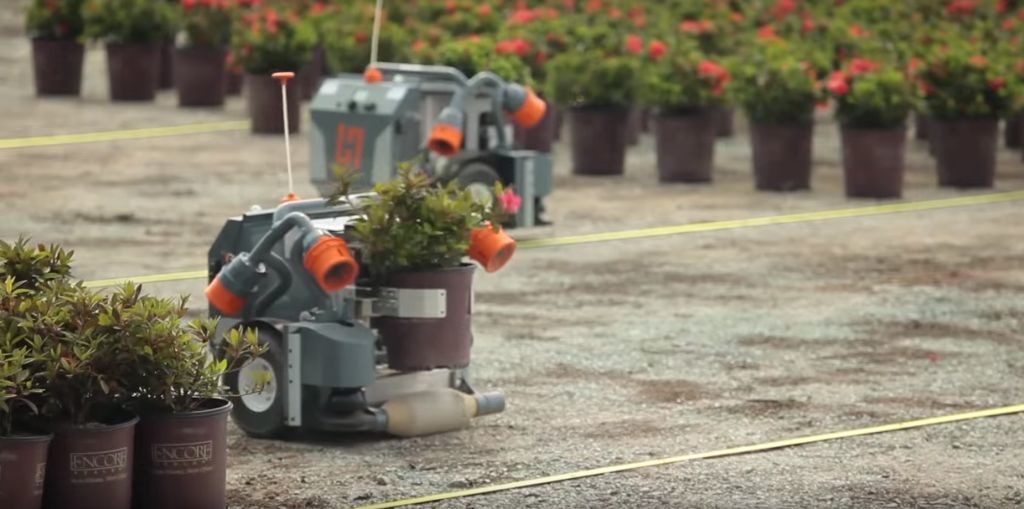
Robohub.org
Harvest Automation stumbles with warehouse robot

A plant-moving robot from Harvest Automation. Source: harvestai/YouTube
In a Boston Globe story by Scott Kirsner, it was revealed that Harvest Automation’s CEO has departed, as have 3/4 of the 30 employees that worked there in 2015. The company is attempting to sell its e-commerce bot and system technology to keep the company alive.
Harvest Automation started in 2009 with a goal of providing robotic solutions to businesses that employed large numbers of low-cost labor. They found a niche within agriculture in nurseries. Growers needed labor to rearrange pots regularly. So Harvest built a rugged little robot that works in swarms to pick up and transplant pots as required. It appeared to be successful with sales doubling in each of the last two years. Their initial clients were some of their initial investors – nursery owners around the U.S. who provided guidance and industry experience as well as funding.
But then John Kawola joined the company in 2012 as CEO and promptly began to develop another labor-saving robot which was to work in warehouses: the OmniVeyor.
Watch the video of how it works here:
Kawola reasoned that the agricultural market was “interesting but small.” The OmniVeyor was pre-marketed in 2015 and was scheduled to be launched in Spring 2016. Quoting from the Boston Globe article:
It was designed to transport a plastic totebox around a warehouse, so that workers in the aisles could simply pull an item from the shelf and drop it into the tote; then, the bot would go to the next aisle where it needed an item. At the end of the process, the bot would report to a packing station where all of the items in the order would be transferred to a box, sealed up, and sent off to the customer.
Unlike the ag robot group, the warehouse group didn’t have the range of experience offered by their nursery investors and the resulting system and robot were somewhat flawed. According to one distribution center (DC) owner who previewed Harvest’s new OmniVeyor material handling robot, the system required a platform 16″ off the ground upon which the OmniVeyor would slide totes. But warehouse space is at a premium and floor space is even more valuable. It was an unworkable solution. Innovation has to solve problems; not create them. Consequently, the DC owner wasn’t a buyer.
Nor, it seems, were any others. Let’s hope that Harvest Automation is able to find funding to keep its ag robot group going.
tags: c-Business-Finance, Frank Tobe, Harvest Automation, The Robot Report


